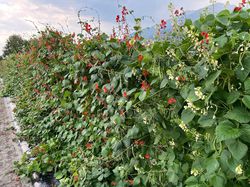 Summer is the time to take a well-deserved rest and enjoy your garden. Unfortunately, this is only partly the case for Lubera®. Although we are incredibly happy about everything that grows and thrives, there is a lot of work to do right now. But in the process we have discovered many exciting new things. So come along and catch a glimpse of the exciting breeding news and what you might be lucky enough to grow in your own garden in the next few years.
Summer is the time to take a well-deserved rest and enjoy your garden. Unfortunately, this is only partly the case for Lubera®. Although we are incredibly happy about everything that grows and thrives, there is a lot of work to do right now. But in the process we have discovered many exciting new things. So come along and catch a glimpse of the exciting breeding news and what you might be lucky enough to grow in your own garden in the next few years.
Passion flowers and passion fruit
Personally, I hadn't been to Buchs for a month and was particularly eager to see the hardy passion fruit plants. And I was truly not disappointed. What were 5 cm tall seedlings 2 months ago were now partly over 2.5 m tall plants with flowers and fruits. Here, too, there were enormous differences between the approx. 700 plants.
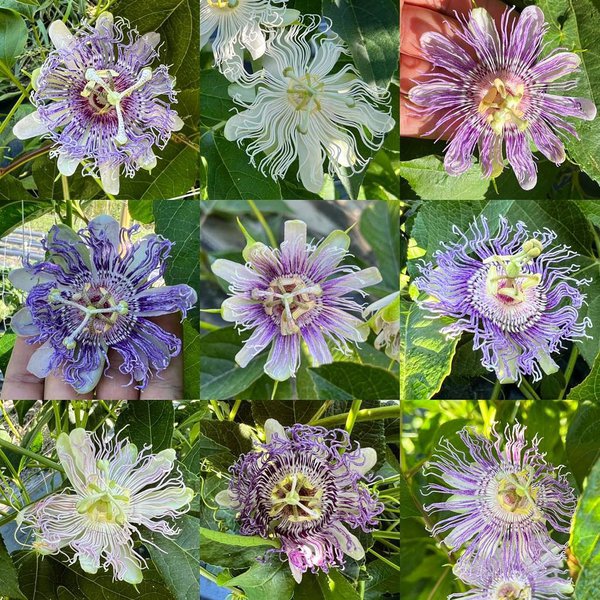
Picture: The diversity of hardy passion flowers.
What was particularly encouraging to see was that about a dozen plants seemed to be unusually early. They already had fruits the size of chicken eggs, while other plants were just forming their first flower buds. So I immediately went through the rows to select the most promising plants. The first crosses of the year were also made, but this turned out to be more difficult than expected. At 6 o'clock in the morning, bees and bumblebees had already robbed the pollen from the flowers and then a rain shower came, which completely washed away the remaining pollen. Well, that's how it goes in breeding. You have a great plan in your head and then everything turns out differently in the end. You have to deal with living plants in nature. But despite everything, things progress, often more slowly and differently than you would have thought, but still.
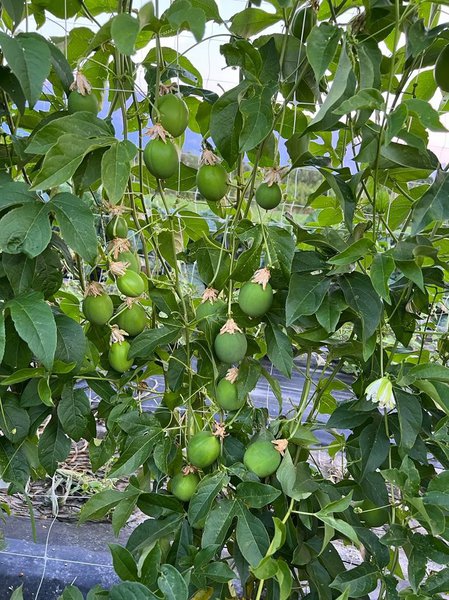
Picture: A hardy passion flower, already full of fruit.
The incredible diversity of fire beans
The fire beans are in full bloom and beauty right now. Many visitors to Buchs are fascinated by the plants and we also wonder why these great plants are not seen more often in gardens. You can use them perfectly as a fast-growing, flowering and low-maintenance screen for the summer and you even end up with delicious, edible beans.

Picture: The beautiful fire beans on the trial field in Buchs.
Although we are mainly interested in hardy perennial varieties, the beans are also great as annual plants. Since it is the beginning of our breeding work with fire beans, we now tried to get to know the plants a little better for the first time. In most publications on fire beans you read about red (the classic fire beans) and white flowering varieties. However, we soon realised that there is more diversity here as well. We discovered that there are 4 main flower colours, each with different shades. The colours range from red to bicolour and pink-beige to pure white.
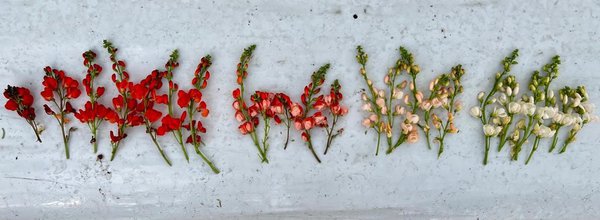
Picture: The colour palette of the fire bean flowers.
We were also surprised to find, among the more than 100 different varieties, some that grew more like compact bush beans and did not climb up like the others. Let's see if this can be interesting for us in the future. But it is still a nice find.
In the end, misfortune struck
So we immediately started to select the beans with the most beautiful flowers, with the best yield and the best health and vigour. However, in the middle of last week, misfortune struck. The now quite dense wall of fire beans was knocked down by a thunderstorm and the posts holding the netting broke off. Fortunately, the plants did not seem to be too badly affected. So once again we were lucky.
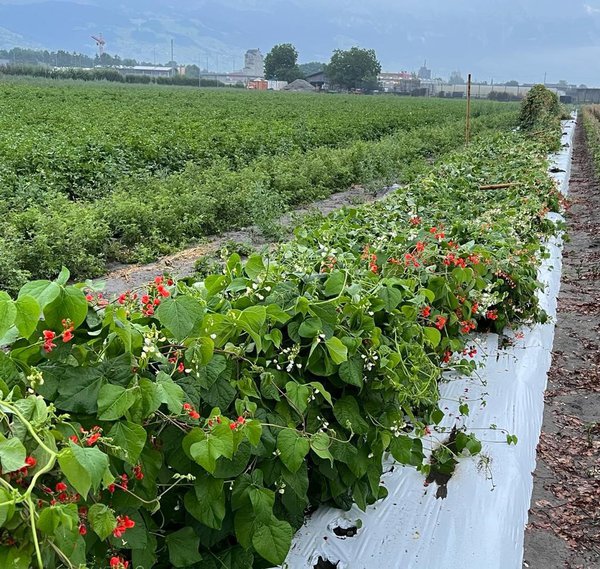
Picture: The toppled bean field.
So the net was put up again and reinforced with double the number of posts, only to land on the ground again just a few days later. Well, how was it again: You have your great plan in mind and then it all turns out differently in the end?
Melons, melons, melons
Melons grow in the breeding fields in Buchs, Switzerland: Very, very many melons. Over 1000 melon plants in more than 150 different varieties. Now about 1.5 months after planting the seedlings, huge variety differences are showing. Some varieties have set up to 6 melons per plant, others none at all. Some candidates are already completely dead, others grow so extremely well that we hardly know how to tame them, as they overgrow the nearby tomatoes and sweet potatoes.
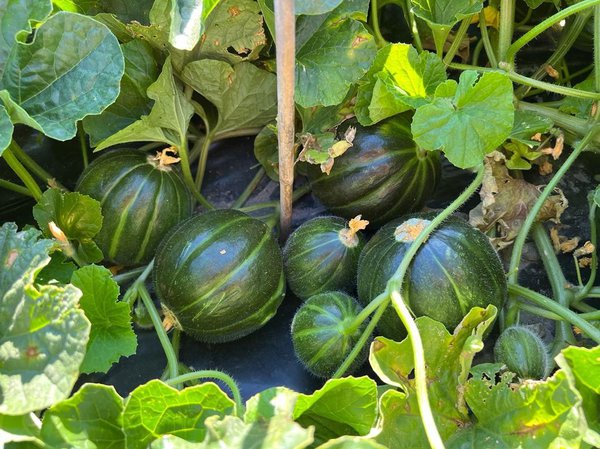
Picture: Promising honeydew melon with great fruit set.
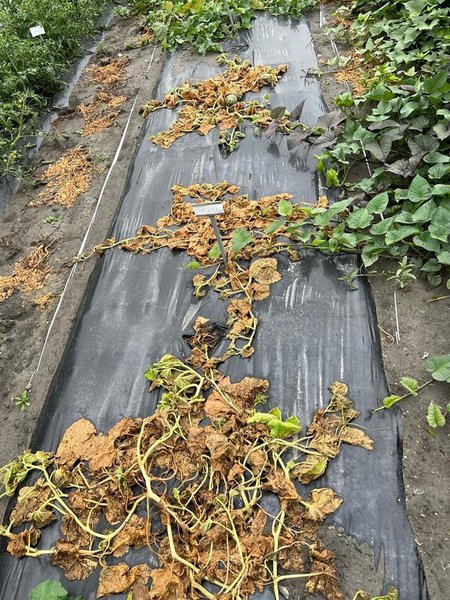
Picture: Already dead melon variety.
We have already been able to select promising plants on the basis of leaf health, plant growth and fruit set. In 1 - 2 weeks the first fruits will be ripe and the big melon tasting will begin.
Harvest start for the outdoor chillies
The outdoor chillies have enjoyed the summer so far and are growing happily. Chillies have proved to be surprisingly robust and have hardly any disease problems in our climate. Only one of the 26 varieties tested had a few dead branches. This week chillies were harvested for the first time. We do this once a week to note the number and weight of the harvested fruits. At the end of the summer, we then have a good idea of which varieties are earliest or most productive. If you want to try out different outdoor chillies on your own, I advise you not to rub your eyes with your fingers, otherwise it can quickly turn into a tearful affair. My fingers have already itched, so hot are some of these chilli varieties.
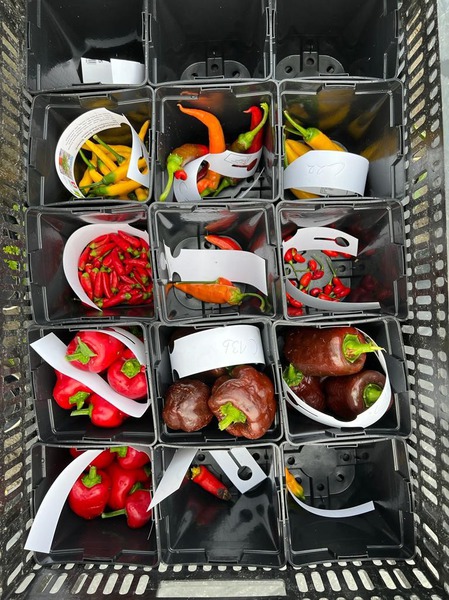
Picture: Various harvested chilli fruits
How bad weather is good for breeding
When the summer storm hit the breeding fields in Buchs, the chillies also had to show what they were made of. Such bad weather events are unpleasant for the grower, but very helpful for breeding, because only under stress do the plants show what they are really made of. Here it became apparent that branches or the entire trunk of one or the other variety broke off in the storm. Such varieties will probably be discarded in the long run. Others had rather flexible shoots and lay down on the ground. In this case, we have to wait and see whether the plants will straighten up again in a few days or remain lying down until harvest.
Cabbage is boring?
When talking about exciting new plants, hardly anyone will think of cabbage. Its image is too stale. But if you come to our breeding fields in Buchs you can see how extremely interesting cabbage can be. We at Lubera believe that various perennial vegetables - our EverVeg® series - are the future of vegetables in the garden. That is, a plant that you plant only once and then harvest for years. So we already have several varieties of perennial kale in our assortment. But there is much more to come. Chris Homanics has been growing perennial cabbage in the northwest of the USA for over 10 years. From him we have a wild seed mix of a breeding population.
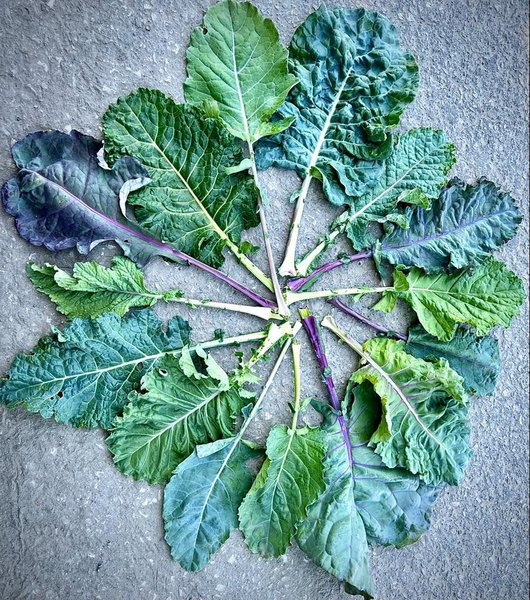
Picture: tree kale - A palette of colours and shapes
A palette of different 'tree kale' varieties
When we saw the seedlings at the end of spring, we thought: Well they don't look that different. But as soon as the plants got bigger they showed their whole range: from blue to silver-white to green, from smooth to rough, small to big, matt or shiny, there is everything among these plants. Selection is particularly difficult here, as one would prefer to keep everything. In the long run, we will perhaps keep the best 10 plants, whereby there will be both the most productive varieties possible and the most beautiful ornamental varieties possible, which can also be placed well in a perennial border.
Strawberries - but please with colourful flowers
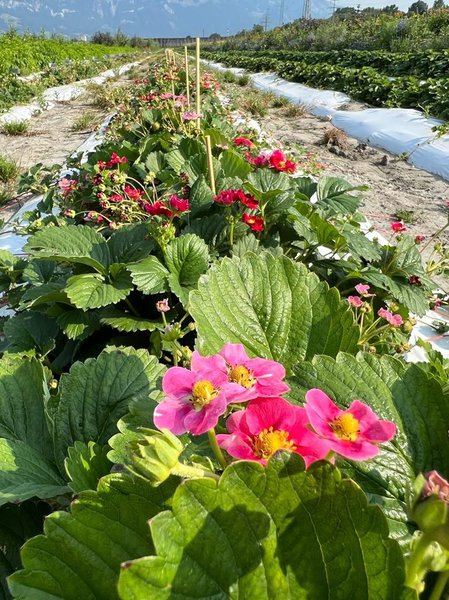
Picture: Colourful flowering strawberries grow in the field in Buchs.
In recent years, new strawberry varieties with pink flowers have been bred. But we are only at the very beginning of these new berries. The aim is to get plants with a 'Double Pleasure®', i.e. both very tasty fruits and beautifully ornamental flowers. This week we were able to test several crossbred populations: How do the plants grow? Do the fruits taste good? Are they healthy? Of course, there are also varieties that fall apart, taste terrible or are more susceptible to disease. But every now and then you discover real treasures. We have selected some great red-flowering plants as well as new pink varieties that are ideal for container cultivation: very compact and healthy plants without runners and with lots of tasty fruit. One thing is for sure: the future of strawberry breeding is colourful!
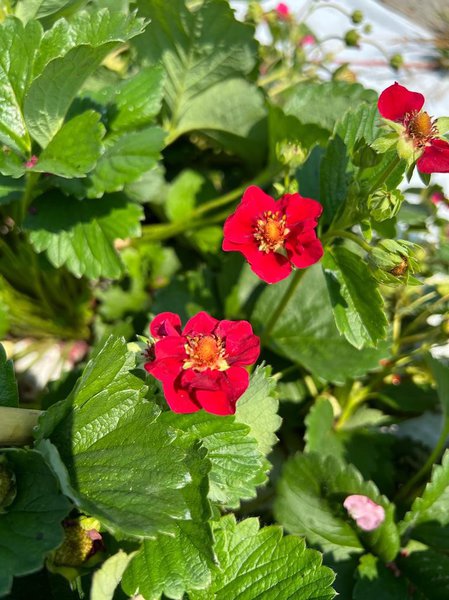
Picture: Red strawberry flowers
